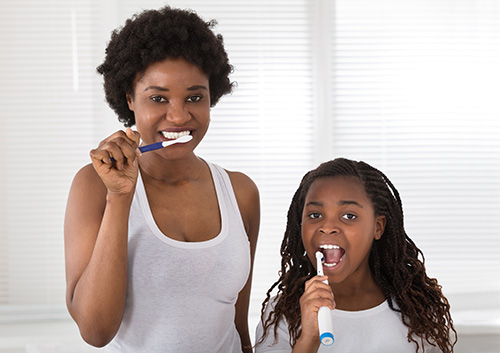When Snoring Becomes More Than Just Annoying
May 24th, 2025

Snoring occurs when the tissues in the throat relax enough to block part of our airways, or physical conditions such as enlarged tonsils or a deviated septum prevent air from flowing freely. This obstruction causes the tissues around the airway to vibrate, producing that familiar, unpleasant sound. But sometimes, loud, constant snoring is a sign of a condition called Obstructive Sleep Apnea (OSA). With OSA, the sleeper actually stops breathing for a few seconds at a time, or, in some cases, even longer. The body wakes to breathe again properly, so we move from the deep sleep we need to keep ourselves healthy mentally and physically to a lighter state of sleep or wakefulness—and this disruption of the sleep cycle can happen dozens of times an hour.
The potential problems caused by sleep apnea are many. You could suffer from daily morning headaches, sore throats, and dry mouth (which can lead to tooth and gum problems). You might find yourself moody, depressed or forgetful. Irritability and loss of libido are common consequences of sleep apnea. Any or all of these problems can make getting through each day a struggle.
Even worse, sleep apnea can lead to very dangerous situations. You could fall asleep while working, watching your children, or even driving. Sleep apnea has been linked to very serious conditions such as high blood pressure, heart disease, and stroke. And for those who suffer from this disorder, general anesthesia or pain medication can lead to severe or even fatal consequences.
You should be examined for sleep apnea if you or a loved one notice any of the following symptoms:
- Snoring loudly enough to disturb your sleep or the sleep of others
- Waking up gasping for air
- Pauses between normal breathing during sleep
- Continual drowsiness during the day
- Waking up with headaches, sore throats or dry mouth regularly
- Personality changes
If you are diagnosed with sleep apnea, talk to Sandra Martin at our Wake Forrest, North Carolina office. We can point you in the right direction for treatment, including the possibility of crafting an orthodontic oral appliance to maintain open airways as you sleep. But whatever treatment you and your doctors decide on, the important part is following through. Don’t let an annoying situation become a dangerous, and even life-threatening, one.




